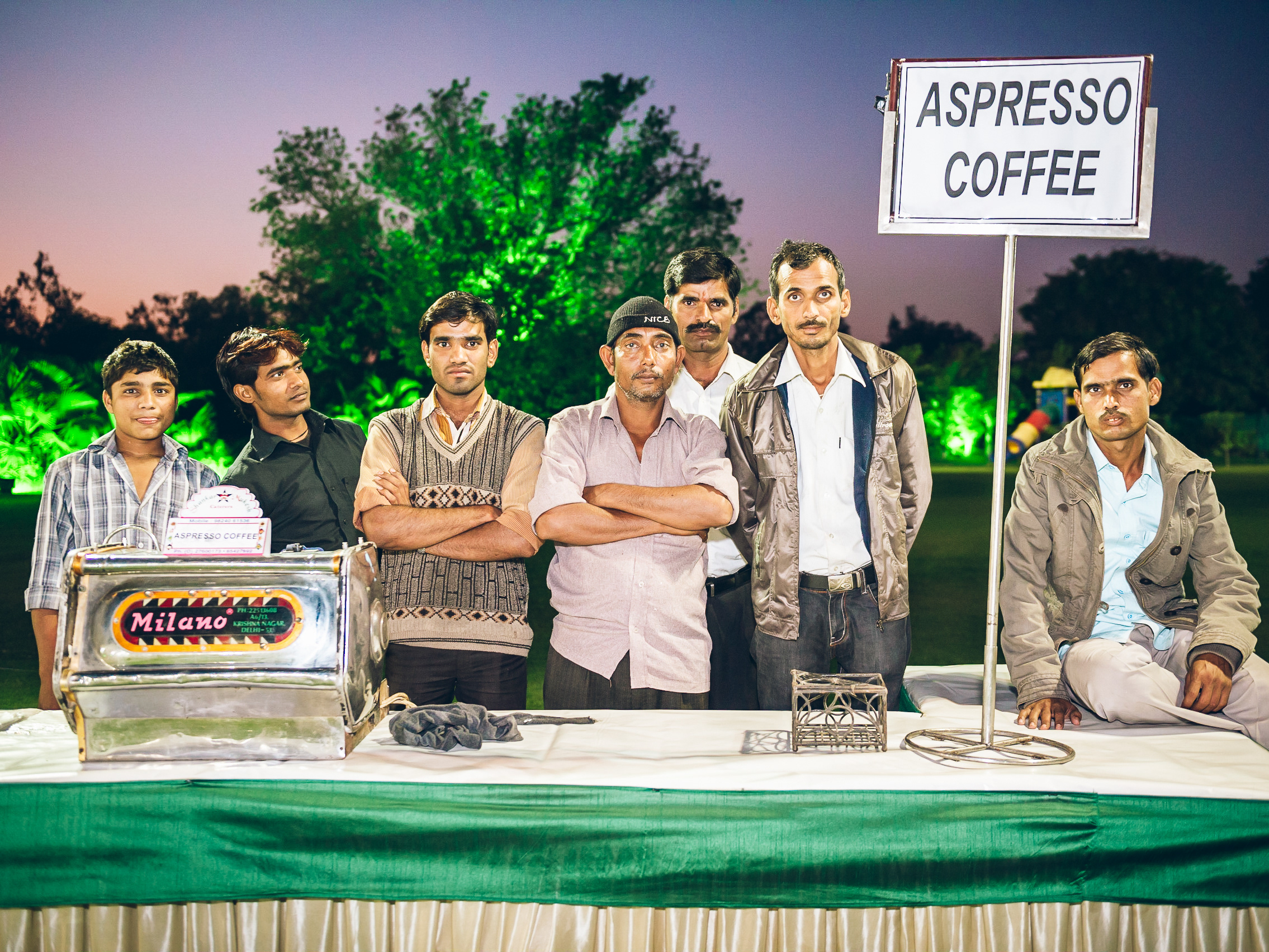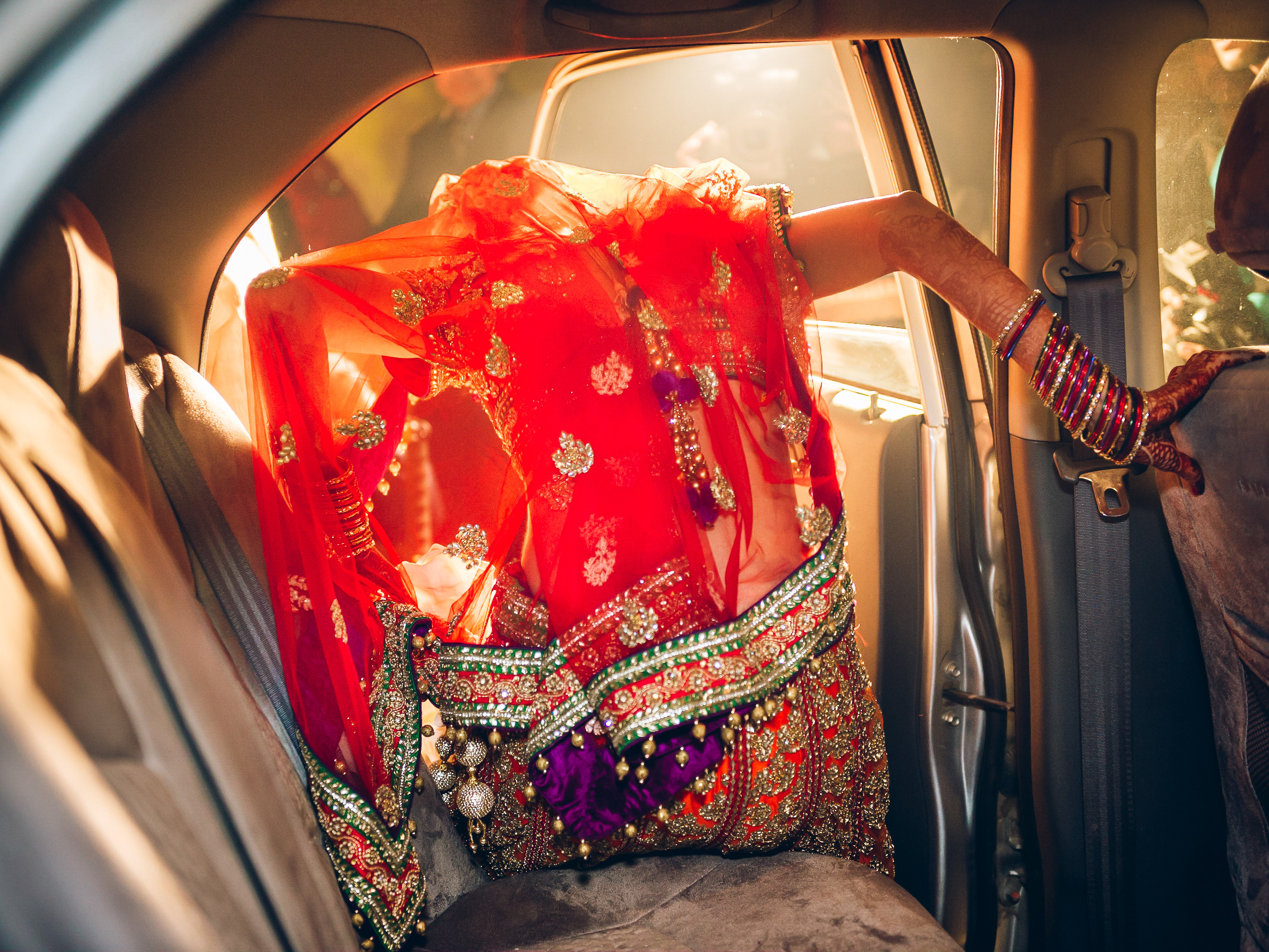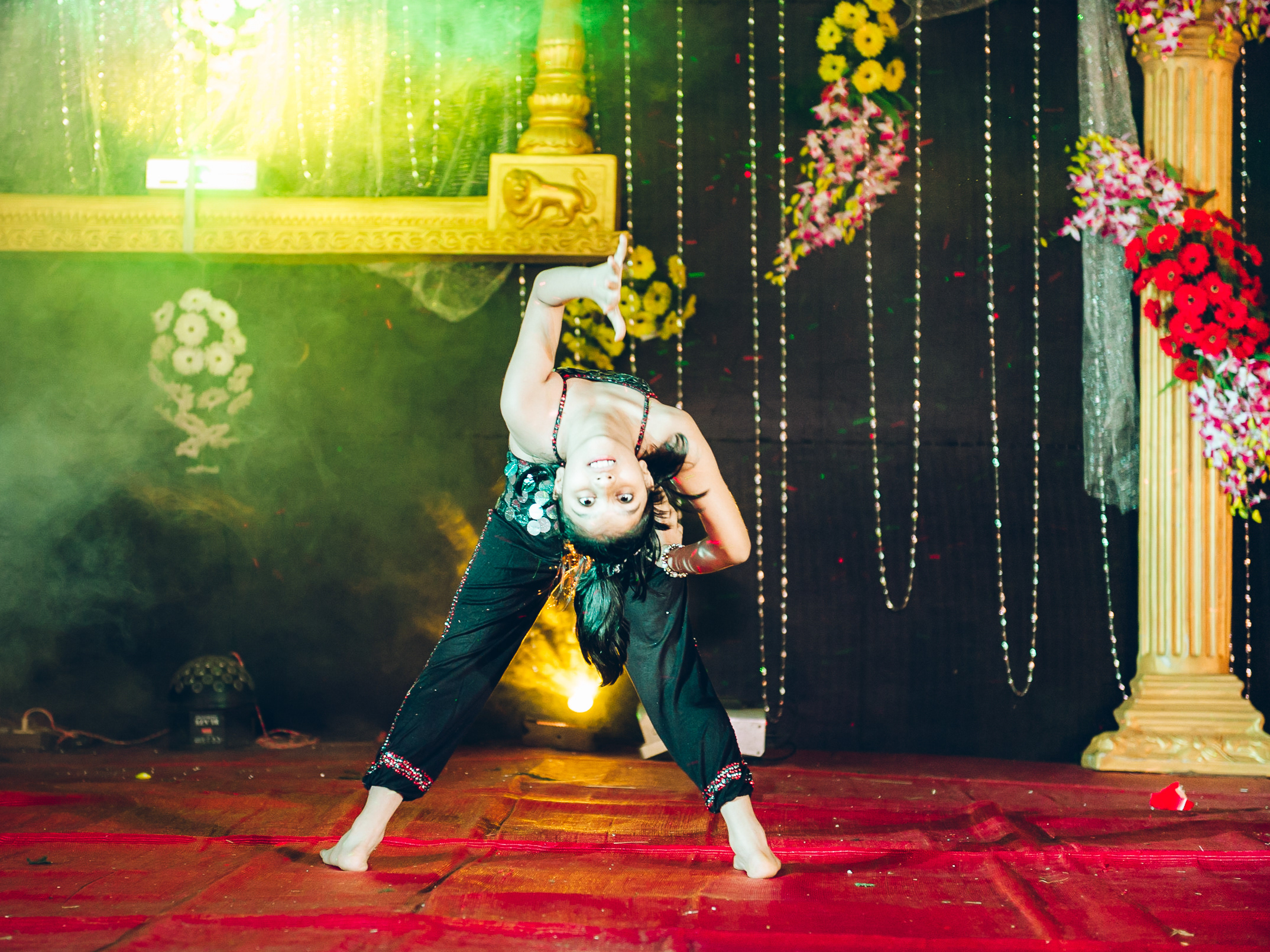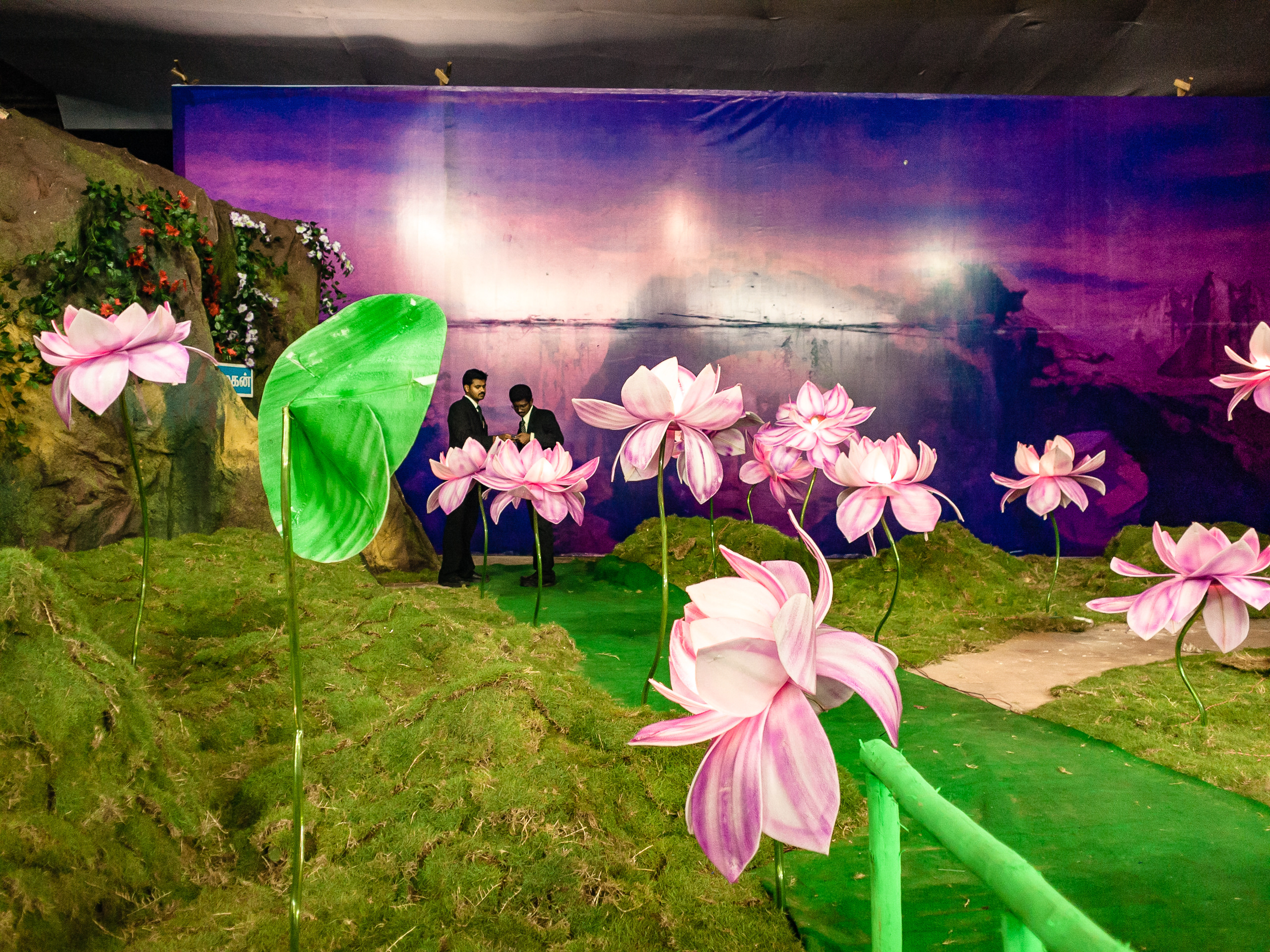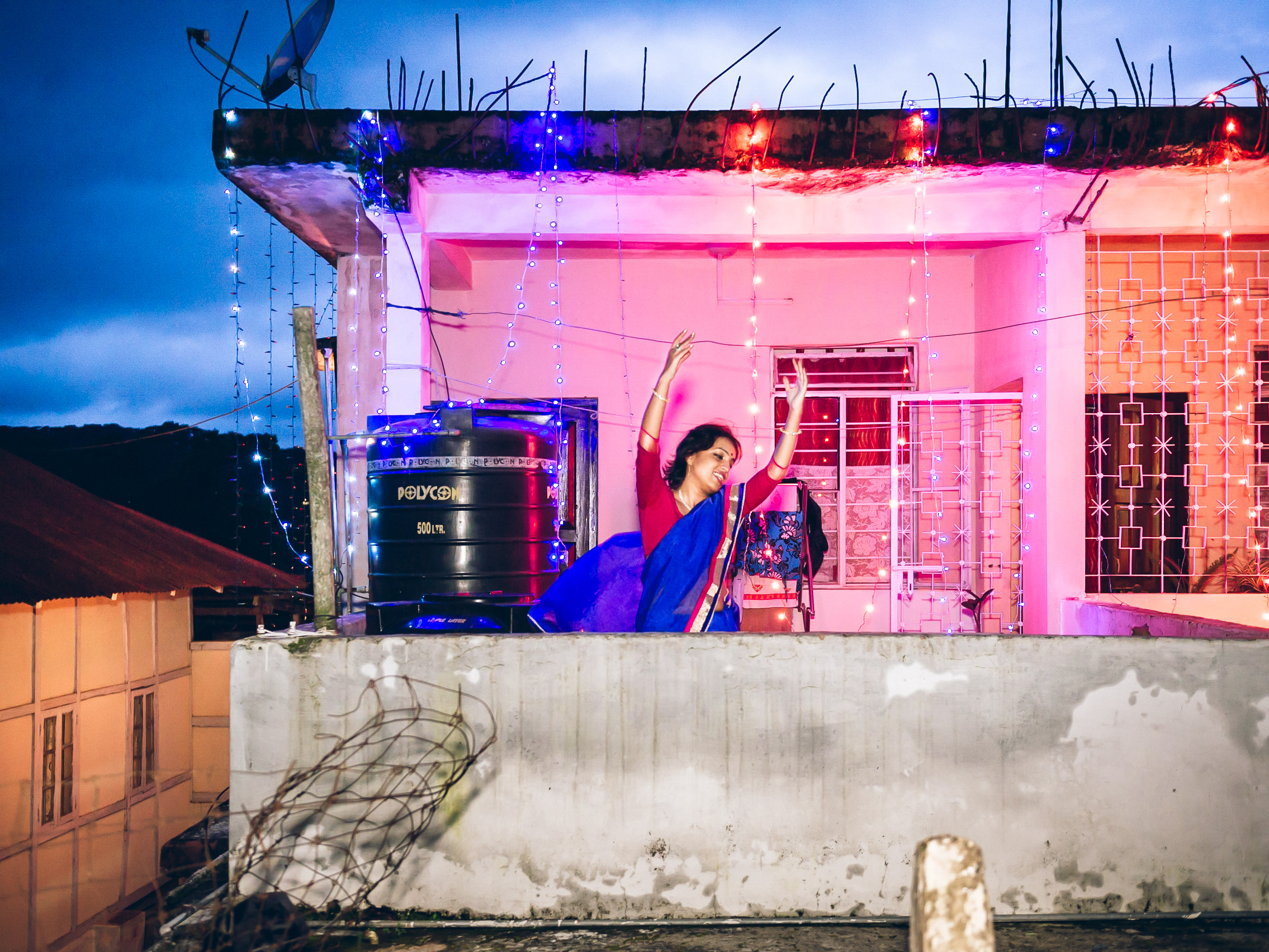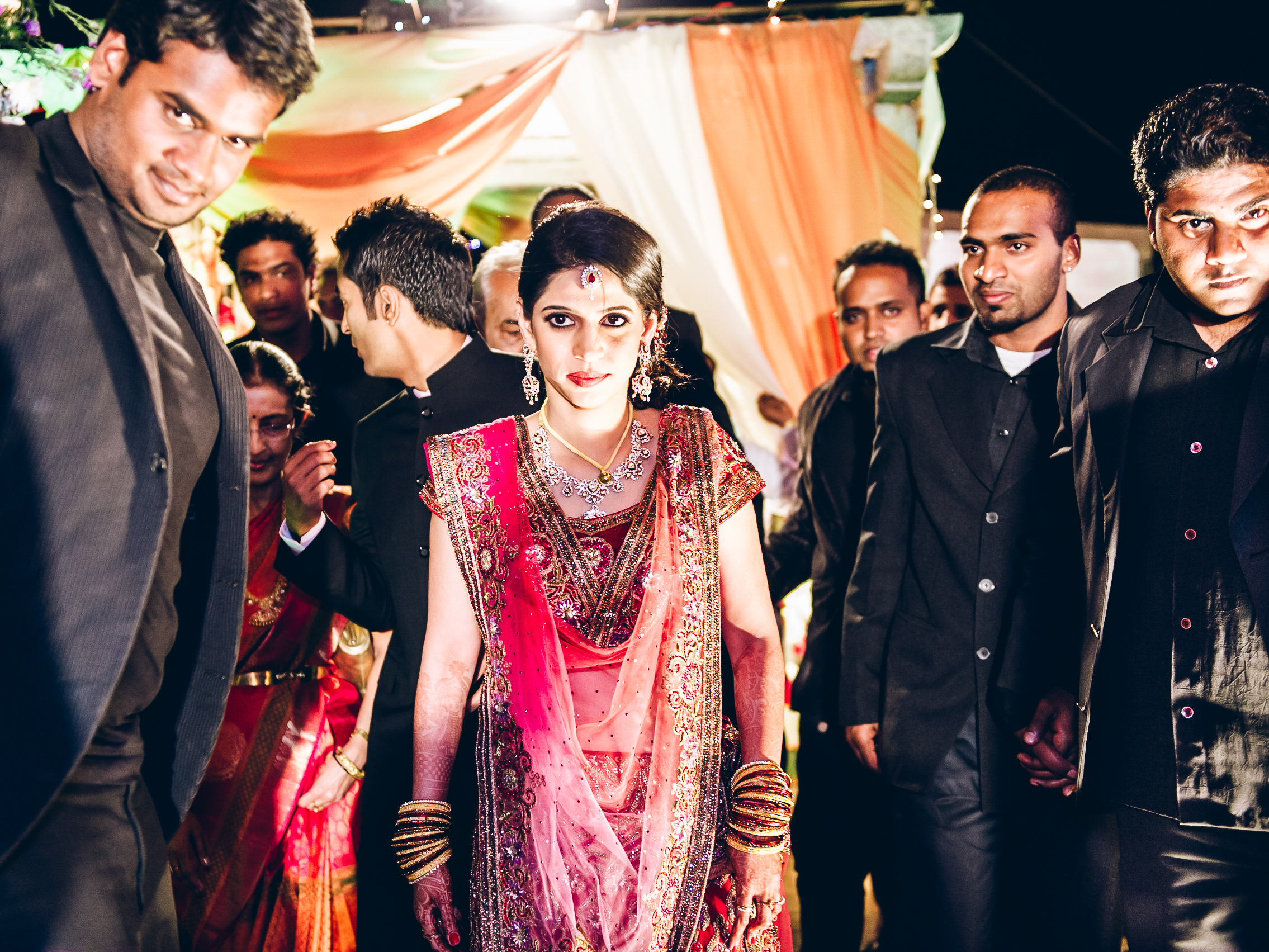Bond & Bondage
by Mahesh Shantaram
by Mahesh Shantaram
Kalindi’s marriage was made in tax haven. Her big day was actually a strategic joint venture between two business magnates, the kind who, if they sneezed, could give the Sensex a slipped disc. Kalindi’s father got an early foothold into the CCTV industry. As Indians became more insecure, his business grew by leaps and bounds. She will marry into the family that owns exclusive rights to sell sugar doughnuts and deep-fried chicken to half the population. Needless to say, in the diabetes capital of the world, business is booming.
The great Indian wedding, like the great Indian waistline, has bloated to keep up with great Indian aspirations. A yuppie investment banker-type with a switched-on accent is trying on a tuxedo for the first time. This is momentous and must be captured by the official photographer, he believes. He does that action—how shall I put it? The equivalent of snapping fingers at a waiter in a restaurant—and snaps me out of my reverie of how I’m creating important work that will one day end up at the MoMA or some such.
“Take a picture,” he commands. I decline the invitation. “You're a photographer, right? Then what’s the problem?” Earlier, I would have mumbled something about how I’m a documentary photographer and so on. But that’s just bullshit. I feel like a brain surgeon who has to each time explain what a brain is.
The great Indian wedding, like the great Indian waistline, has bloated to keep up with great Indian aspirations. A yuppie investment banker-type with a switched-on accent is trying on a tuxedo for the first time. This is momentous and must be captured by the official photographer, he believes. He does that action—how shall I put it? The equivalent of snapping fingers at a waiter in a restaurant—and snaps me out of my reverie of how I’m creating important work that will one day end up at the MoMA or some such.
“Take a picture,” he commands. I decline the invitation. “You're a photographer, right? Then what’s the problem?” Earlier, I would have mumbled something about how I’m a documentary photographer and so on. But that’s just bullshit. I feel like a brain surgeon who has to each time explain what a brain is.
Days of mirth and merriment, dance and debauchery, prayer and pretence go by before the inevitable night appears. The priest makes his entry with a body odour so formidable, it could strike the fear of god in any human. He mumbles the mantras that, just like the national anthem, are in a language indecipherable to the vast majority.
The couple takes the stage and settles in their seats. The priest quotes from his sacred handbook and administers the seven vows, all of which require an urgent update for the current century. The priest’s main role in life is like that of a humble baggage handler—to hand over the cultural baggage of the last 5000 years to the next generation.
Suddenly, the wedding comes to a standstill. There can be no Hindu wedding without fire, and there is no fire when ghee refuses to flow. On a bitingly cold winter’s night in Jaisalmer, the videographer is called in to melt the ghee using the heat of his halogen lamp, unwelcome at all other times. This is his Jesus moment; he is the light of the world. In minutes, he proves why he cannot be replaced by the CCTV camera. The marriage could not have gone on without him.
The priest then pronounces the couple woman and saviour. He declares Kalindi’s allegiance to her husband. And his parents. And grandparents. And his brother and wife and kids. She’s married a village. She may now raise a child.
꧁꧂
Sakshi and her fiancé were both upper-middle-class Indians with their heads firmly on their shoulders and the world at their feet. They met at a mutual friend’s party in New York. She studied design at Parsons before getting a job at a startup. He got lapped up by Wall Street soon after graduating from Carnegie Mellon. She was a vegan-by-birth Jain. He, a one-fish-a-day Bengali. And yet, all they could see was how perfect they were for each other. A match made in USA. After five years of being “really good friends”, they were ready to embark on the transatlantic pilgrimage that thousands of Indians make every year—much like the March of the Penguins—to get married in the august presence of their families.
In the heart of Delhi’s Cantonment is an auditorium with a large garden. You can’t miss it, thanks to the Hawker Hunter fighter jet that hangs prominently above the adjacent Air Force School. This haunting tribute to settling differences with neighbours will form the backdrop of today’s wedding.
An Indian couple typically gets married twice in their lifetime. The first is their own wedding, where they have no clue what to expect. The second time is by proxy when they marry their kids off. In that sense, it was Sakshi’s first wedding though not her mother’s. As much as Sakshi wanted to keep it limited to their closest friends and family, her mother had veto power.
The beat of drums gets louder. They announce the arrival of the man of the moment, who inches his way through city traffic on a horse—always a mare, to be precise, deaf, dumb, and blindfolded to cope with the violence around her. The baraat procession is led by a wedding band whose professional ancestors must have served Maharajas in the times of the British Raj. Tonight, they have just one job: to stir up men, women, and children into an electric frenzy with their rehearsed cacophony. To make sure they stay motivated to the task, uncles and cousins jump in the fray, gyrate their hips, and fling 10 or 20 rupee notes at the bandwallahs or stuff it in their drums or into the drummers’ mouths.
Meanwhile, in the dressing room, Sakshi makes final tweaks to her understated peach sari—a rebellious departure from the screaming bridal red that is de rigueur. Before stepping out to seize her moment, she makes one last call to reason with the unreasonable. “Please papa, come, no?” No chance he'll come. Inter-caste marriage, no?
꧁꧂
Meera is a doctor. Soon after she graduated medical college, her parents let her go on a vacation to Europe. It was her first time abroad, and that too all by herself. She needed to de-stress before her wedding later that year. Her father was a doctor and so was her mother. They ran a multi-speciality hospital in a posh neighbourhood in Chennai. Her brother was a dentist, which also makes him a doctor. Soon the whole family will practise together under one roof.
Meera got married in Perambalur, a tiny district in Tamil Nadu that many would struggle to point out on a map. Her fiancé, also a doctor, was native to the place and his grandfather was an important man there. He built the first schools, colleges and universities in this small town. Many prosperous administrators and civil servants graduated from these institutions, and their gratitude went all the way up to the grandfather. They were all on the guest list as was the whole town of Perambalur. Every billboard in the town was bought out to announce the wedding.
The university’s football field was cleared, and a papier-mâché castle was erected on site for the occasion. There were 12,000 guests in attendance. Meera’s wedding reception, on the other hand, was a relatively more intimate event at only 9,000 guests. Her family insisted on hosting it on their home turf in Chennai, by the beach. Not to be outdone, and also slightly miffed that the Perambalur party had it their way for the wedding, her brother took it upon himself to be the architect of a visual spectacle of “much better taste”, as he put it to me. It was going to be an Alice in Wonderland theme. Everyone who was anyone was there to witness it. Even the “X-Men” were present: an ex-president, an ex-minister, an ex-chairman of some board of control, and even the ex-chief justice of the Supreme Court. (He had had his knees replaced at their hospital.)
To know India is to know its scale. In the US, one wedding planning website registered 38,000 weddings for the triple seven (July 7, 2007) across the states. Time magazine reported this as “the most popular wedding day in history.” How insular! In India, things get a little crazy when the floodgates of the wedding season open days after Diwali. For example, on November 27, 2011, an estimated 60,000 couples tied the knot in Delhi alone, according to the Wall Street Journal. That’s 60,000 daddies in debt. That’s five or ten times as many photographers and videographers prancing about. That’s 120,000 photobooks in the world’s largest market for gaudy photobooks. All in a day’s work. It’s easy to see how the wedding-industrial complex keeps the wheels of the Indian economy turning.
꧁꧂
Avni’s father was an affable man, a respectable man, a man of faith. He was her personal Ganesha, a remover of obstacles. He doted on his daughter, as dads of daughters often do, and promised to make all her dreams come true. That was until she brought home a guy and said this was the man she wanted to marry.
In India, family bonds run marathons. The fact that her beau was Muslim reduced the matter to an open-and-shut case. Well-meaning elders then stepped in to save the day. They sent out feelers through an extensive network of Brahmin matchmakers, middlemen and meddlers to find a boy who met everyone’s expectations, maybe even Avni’s! With boy found, horoscopes matched, and date fixed, the marriage was conducted as per the sacred traditions described in the holy reference manual.
It was a disaster, to say the least. Two years after balancing a punishing career as a tech consultant against a domestic life of violence and dowry demands, Avni filed for divorce. Once the papers came through, however, her father wasted no time in arranging a new match for her. He saw it as his duty to do so. Now, everybody gets a second chance, but in a country so divided along caste and class lines, you are expected to fish in the same pond reserved for people who share your traits. That’s why there are matchmaking portals like secondshaadi.com: ‘The No. 1 matrimonial site for Indians divorced or widowed or looking to start late in life.’
That was the year 2006. I had just returned home from Paris after photography school. When most Bangaloreans my age were paying off their housing loans, I was looking for a future in photojournalism. There was none to be found. But then a door opened. “Mahesh! It seems like you’re not doing much these days. Why not come and take some pictures at Avni’s wedding next week? We’re anyway not hiring a photographer...” Not the most soothing balm for someone starting out in life, but I did take up the offer if only to hide behind the camera at my wife’s first cousin’s second wedding. That’s the long and short of how I became a wedding photographer.
As I write these words, I get a call from my mother. She’s excited about a wedding coming up in the extended family. A cousin’s daughter's marriage has been fixed for later this year. A motorcycle-riding 22-year old free-spirited young lady, accomplished in Carnatic music and a freshly-minted architecture graduate. When the marriage proposal came through, seeing that everything was just perfect, her parents signed off on the deal. Then they let her know the good news.
